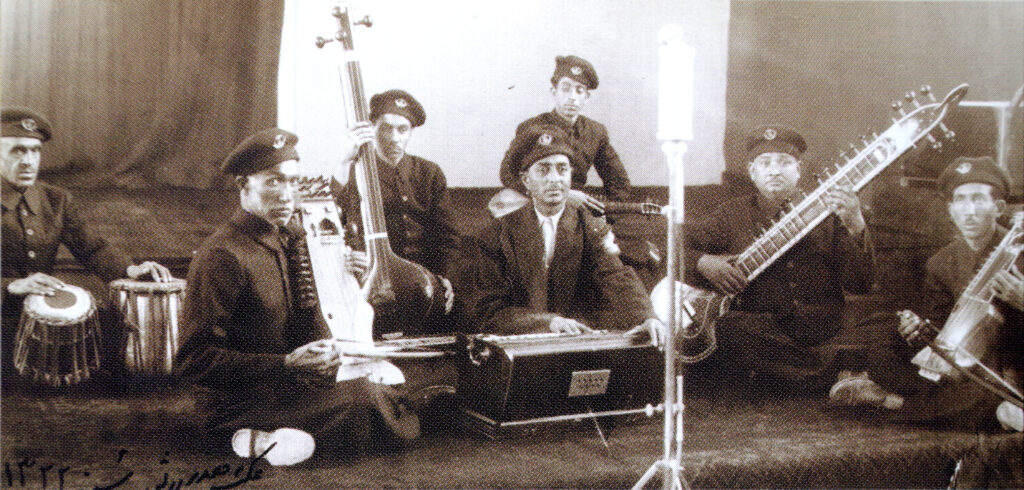
Photograph: Performance by the Orchestra Kiliwāli Radio Afghanistan circa 1957
The Kabuli genre or the invention of a national music
Since the mid-20th century, a new type of music appeared in radio format known as kiliwāli. This term, of Pashtun origin, can be translated as ‘from the village’. So the music kiliwāli would mean ‘village music’.
Ahmad Naser Sarmast and Abdul Wahad Madadi explain that this term is the equivalent of mahalli, of Arabic origin is used by the other populations of Afghanistan. The two terms mean the same thing, and are used by all Afghan populations without distinction. However, Ahmad Sarmast explains that the use of kiliwāli corresponds to the political will, at the time, to make Pashtun the country's official language. The widespread use of the term kiliwāli also corresponds to the appearance, in the first half of the 20th century, a new musical genre, made up of elements of ‘village’ music. It is a hybrid music made up of structural elements from different repertoires mahalli Baluchi, Hazāra, Herati, Uzbek, Tajik and Turkmen. As this is a composite music and to distinguish it from the Pashtun genre proper, I have chosen to refer to it as ‘modern kiliwāli’. The use of the term kiliwāli in this new sense was probably the work of Radio Afghanistan. The initiative for a national radio station was launched in 1928.
To achieve the objective of ‘a national music’, the Afghan leaders found in the combination of regional musical elements the means to bring together the entire Afghan population. The radio musicians collected tarz-s, or traditional songs, in the different regions of the country. They arranged the new music before recording it and broadcasting it over the airwaves.
In 1957, Ustād, title given to a master, Mohammad Omar arranges music mahalli for his eponymous ensemble: ‘Orchestre Radio Afghanistan Orchestra’.Like Radio Afghanistan's first orchestra, the ensemble ofUstād Mohammad Omar brought together several instruments, but differed in that they were all national: 3 rubāb, 2 tanbur (long-necked lute), 1 dutār (long-necked lute), 2 Afghan sarindā (a viol), 1 dohl (double diaphragm drum) and 1 zirbaghali (single membrane drum).
Ustād Mohammad Omar has distinguished himself by the way he plays the Afghan rubāb, particularly in the classical style. The classical style encompasses two types of music: the naghma-ye klasik and the lariya (or naghma-ye kashāl). The term naghma can be translated as ‘instrumental music’.
The Kiliwāli ‘modern’ musics and the naghma-ye klasik and the lariya musics form the Kabuligenus, which translates as Kabul music or Kabul genre.